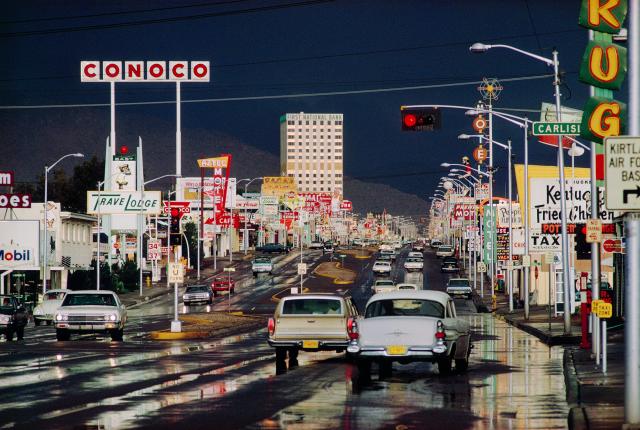UNTIL HE SET FOOT IN NEW MEXICO, in 1952, photographer Ernst Haas was strictly a black-and-white devotee. But during a weeks-long assignment for Life magazine—during which he hitchhiked through deserts, mountains, towns, and pueblos—Haas had a Wizard of Oz–style epiphany: This kind of beauty, he realized, must be captured in color.
A dazzling new photo book, Ernst Haas: The American West (Prestel), showcases the Kodachrome-soaked love affair Haas had with the West and especially New Mexico. While he returned many times for Life and Look, he also became known as the photographer for capturing the dramatic spirit of the West: Madison Avenue hired him to immortalize Marlboro men under a big sky, while Hollywood turned to him for on-set shots of Marilyn Monroe and Clark Gable, in 1961’s The Misfits, and Dustin Hoffman and Faye Dunaway, in 1970’s Little Big Man.
What was it that Haas, an Austrian immigrant who passed away in 1986, found so bewitching? “The light in New Mexico has a special quality as it reflects on the canyons and desert sand,” says his son, Alex. “It can change at any moment, which my father found inspiring. And since childhood, he was deeply interested in the mythology of the West and how it played out in complicated and difficult ways for the Native Americans.”
At more than 200 pages, The American West features early images of Santa Fe, New Mexico’s moody highways, red canyons bathed in shadow, glorious skies, Native dances, and perhaps the single most memorable photograph of Albuquerque ever: a shot of screaming neon signs lighting up Route 66 on a storm-darkened night that reveals America in all its colorful, thrilling, and slightly tawdry glory.



